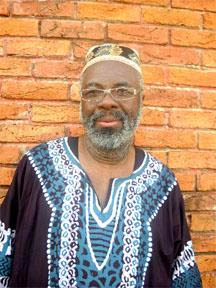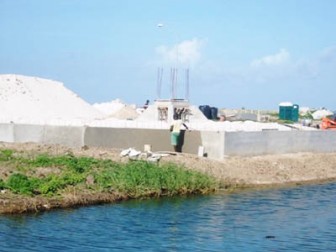Renowned sculptor Ivor Thom, who designed the 1823 slave rebellion monument, has said the site being developed by government for its mounting meets the selection criteria.
The base for monument is being developed at a cost of $26M opposite Camp Ayanganna in the vicinity of Carifesta Avenue and Vlissengen Road. However, its construction has sparked opposition as African groups expected the monument to be erected at Parade Ground, which was the location where some of slaves who participated in the uprising were hanged.

The protesting groups, including the African Cultural and Development Association (ACDA), which have led picketing exercises against the Culture Ministry as a result of the situation, have said that former President Bharrat Jagdeo had made a commitment to erect the monument at Parade Ground during a sod turning exercise held there in 2000. Other civic-minded groups and persons have also written letters to the media in protest.
However, the Government Information Agency (GINA) reported Thom as saying at a news conference on Thursday that an inquiry at the archives revealed that former President Jagdeo did turn the sod at Parade Ground for an “Emancipation Monu-ment,” not for the 1823 monument.
On August 2, 2000, Stabroek News had reported that Jagdeo had turned the sod for an “Emancipation Monument,” although it was also reported around the same time that the monument was being erected in memory of those who died in the 1823 uprising.
Thom also outlined the circumstances regarding the current site’s selection, while saying it fulfils the criteria.
He explained that while preparing his model for the monument he had several East Coast locations in mind. The sculptor said when he was given the contract he was cognisant that certain criteria had to be met regarding the monument’s location, including emotional and physical connection to the rebellion, ambience, adequate land space, accessibility, public view, parking and connection to African people.
A number of areas were suggested and visited, including the Victoria Law Court, Parade Ground, National Park, Success/Montrose, Château Margot, LBI, the Old RDC office at Paradise, Melanie Damishana, Ann’s Grove, Belfield, Bachelor’s Adventure and Mahaica.

According to Thom, points were awarded to the suggested areas on the site selection criteria, and based on that Paradise and LBI received the most points. However, LBI was ruled out since it is a predominantly East Indian community and does not tie in with the criteria, which entails connection to African people.
After the other areas were reviewed, he said Melanie Damishana was identified since Paradise didn’t have the adequate land space. However, the owner of the available land space in Melanie Damishana could not be located.
Further, indications of its unavailability were clear after a basketball court was constructed on the said land.
GINA said that advertisements were issued in the newspapers seeking suggestions for the monument site and only one person responded with Parade Ground. However, it explained that this site was later found to be unsuitable for several reasons, including that the monument would have had to be of a certain height and as such viewing would have posed a challenge.
As a result, it added that a decision was taken that if there was no suitable place on the East Coast for the monument, then it should be placed as close as possible to the East Coast, hence the current site at Carifesta Avenue and Vlissengen Road, which was viewed as the gateway to the East Coast.
Culture Minister Dr Frank Anthony defended the decision to erect the monument along Carifesta Avenue, saying that the “prominent” site was chosen after an invitation for the public’s input yielded no responses.
“In the end, because we didn’t have any persons coming forward to say this is where we want it to be… The committee made a decision and… started construction of the monument at Vlissingen [Road] and Carifesta,” Anthony told the National Assembly last month.
Last week, ACDA, the All African Guyanese Council, the Pan-African Movement, the African Welfare Council, the Guyana Institute of Historical Research, and the People’s Parliament an-nounced the formation of a coalition to establish the 1823 monument in its rightful place, dubbing the planned location disrespectful to African ancestors.
They said that the monument is being disconnected from the site of insurrection without realistic consultation from the Guyanese society and the African groups.




